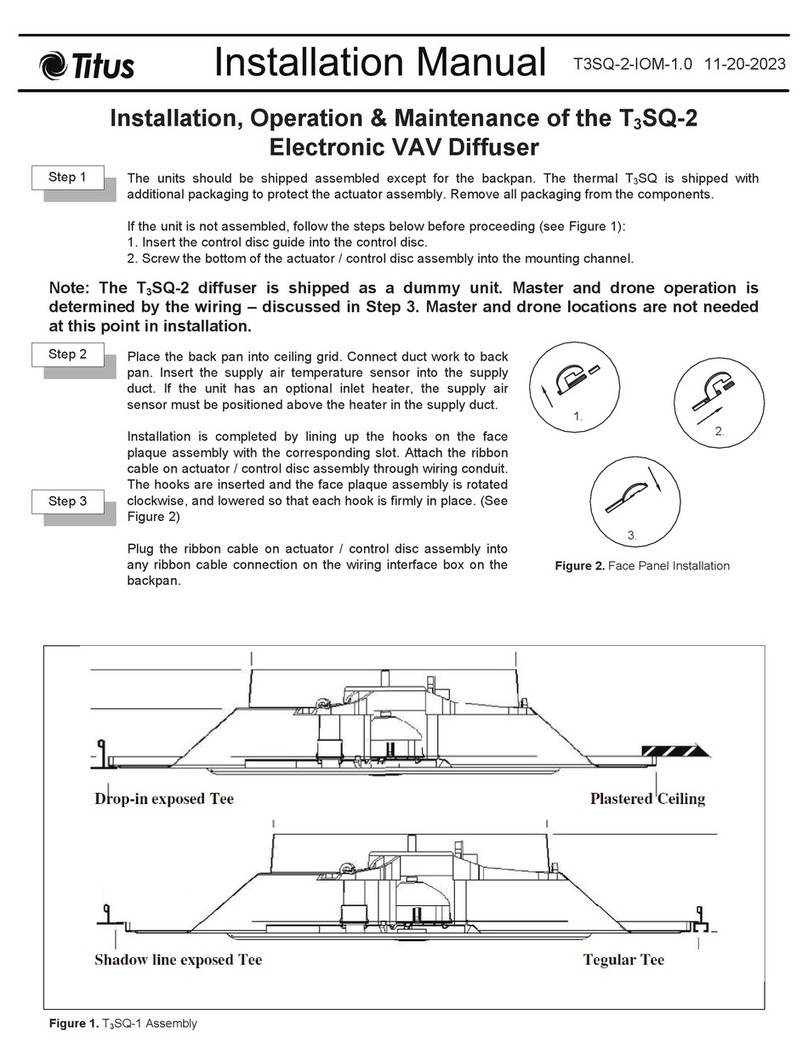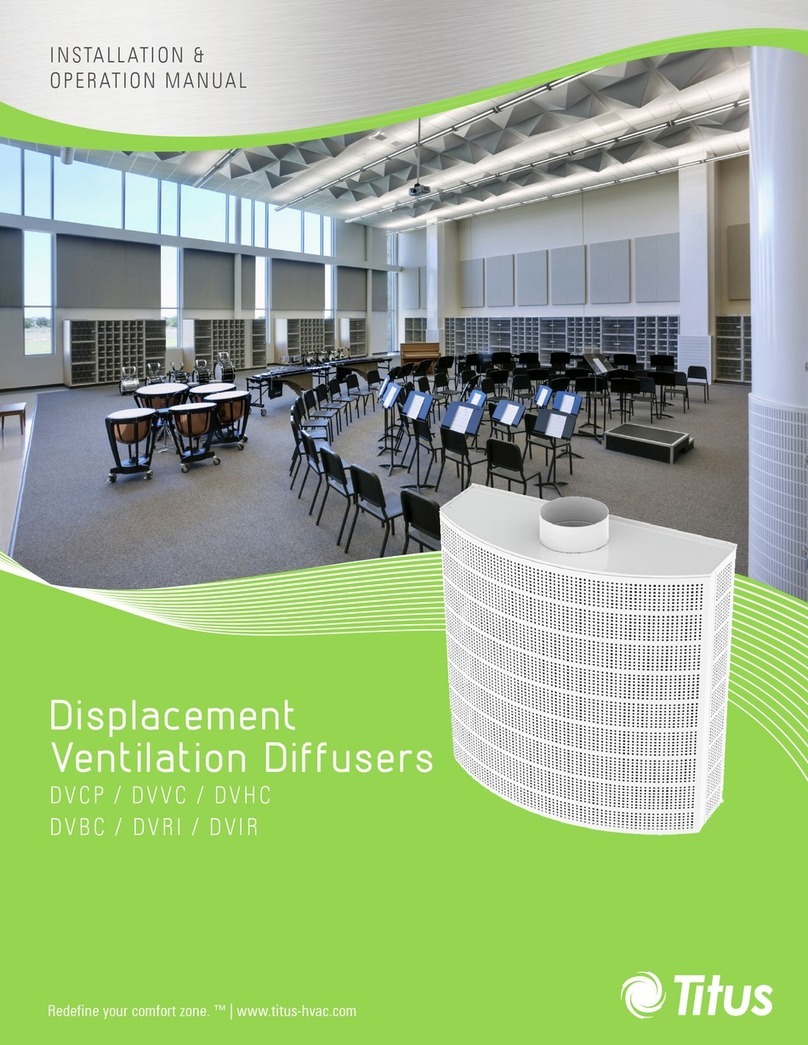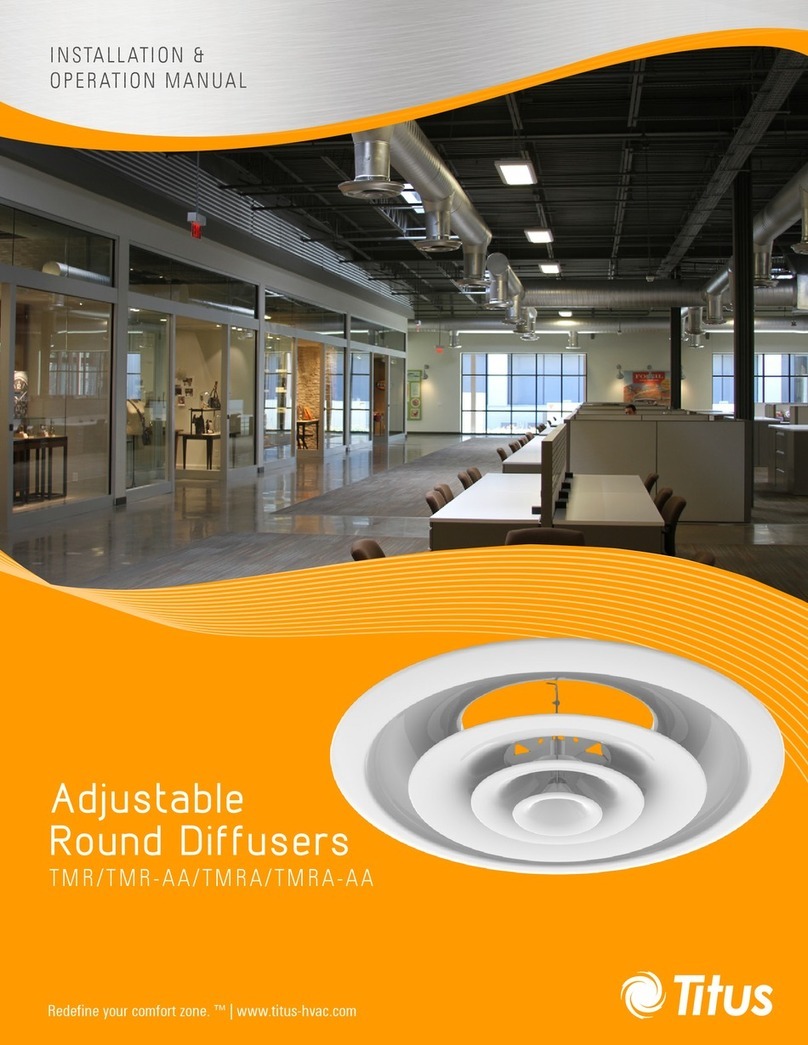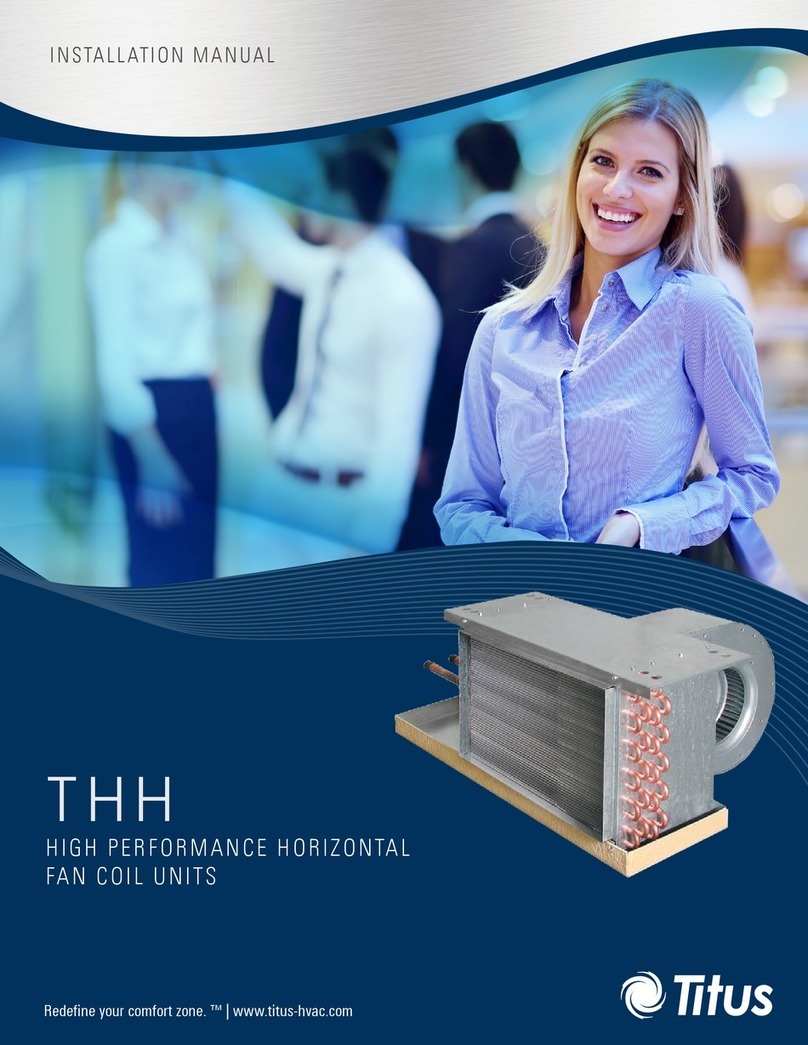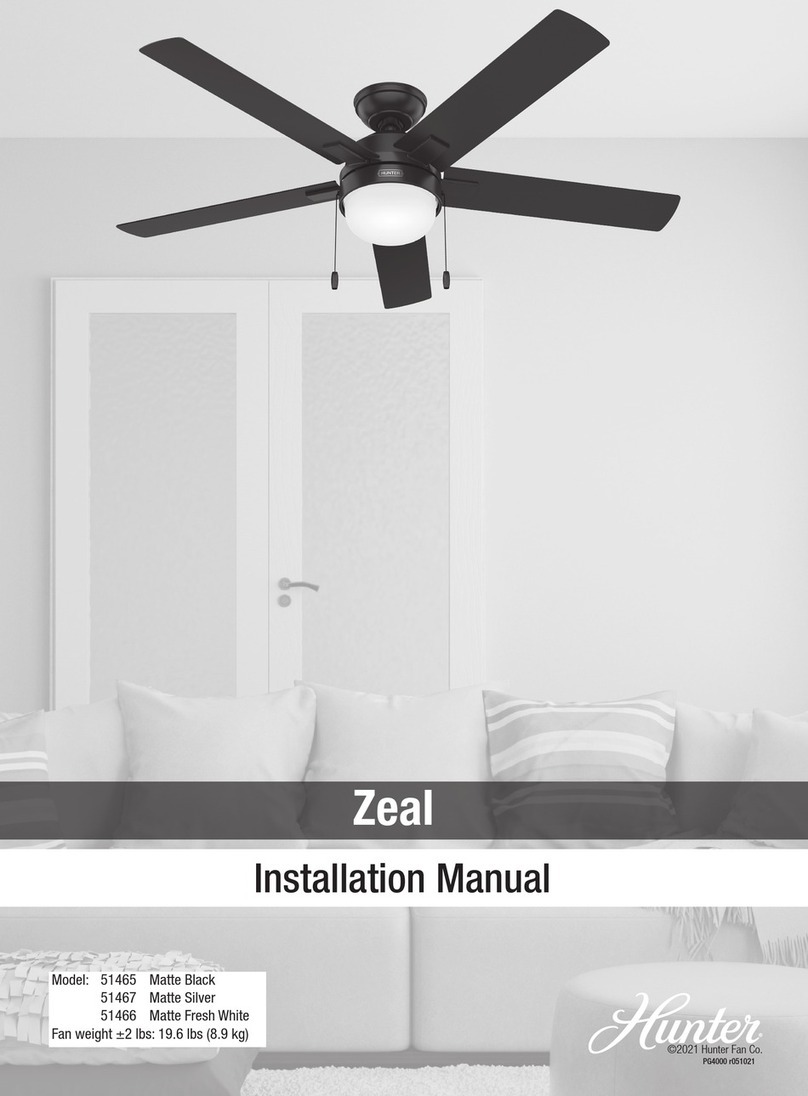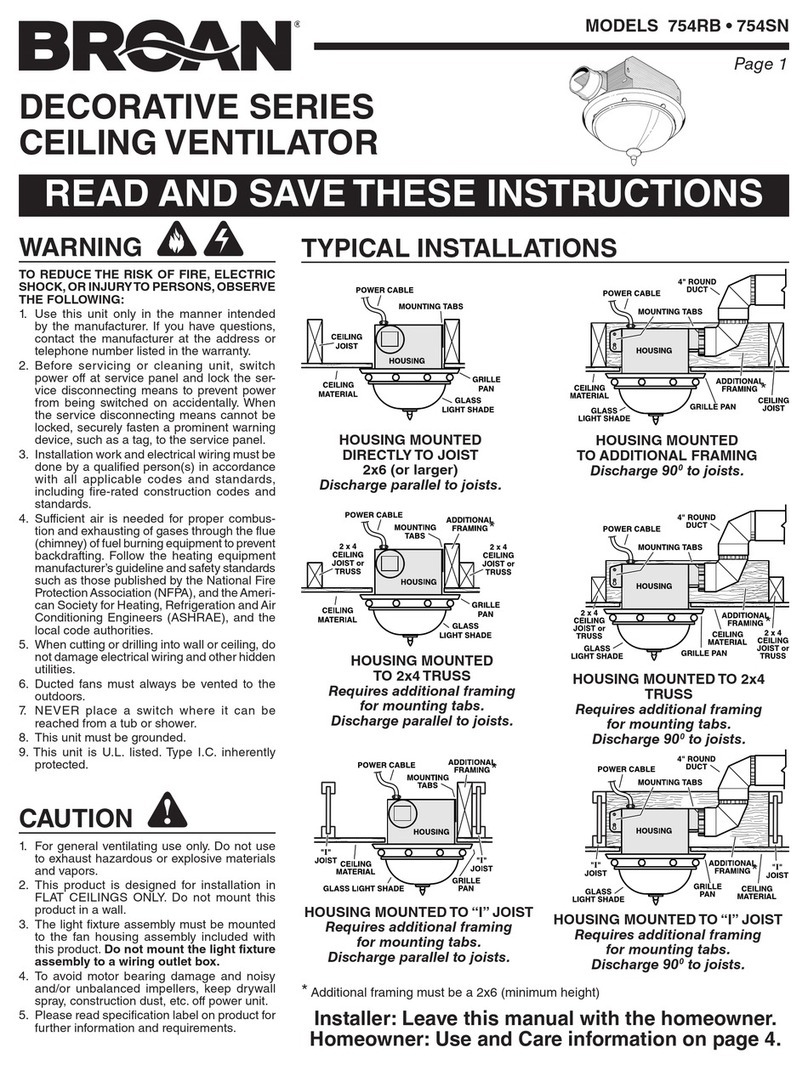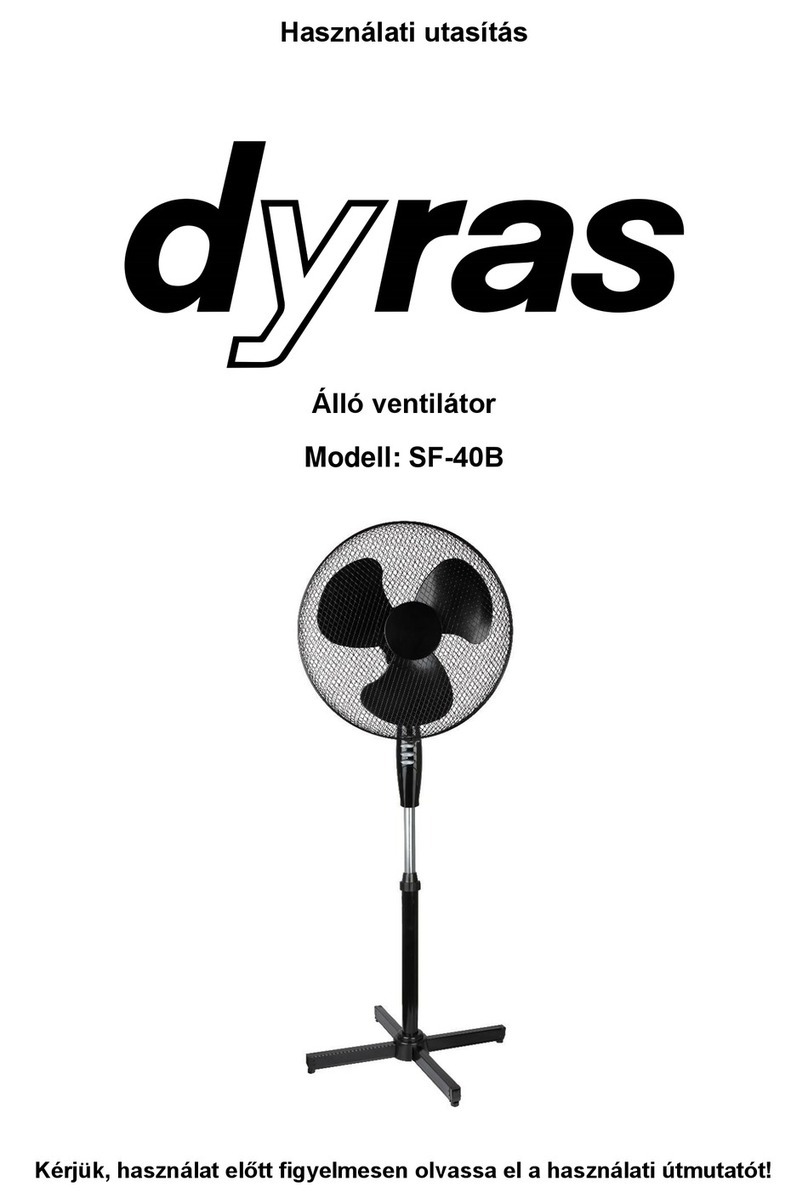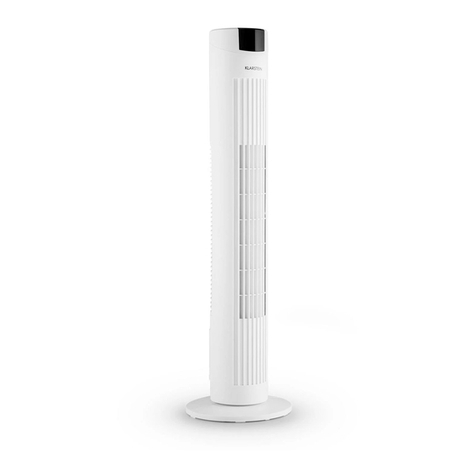Titus FFDE User manual

Redefine your comfort zone. ™ | www.titus-hvac.com
INSTALLATION &
OPERATION MANUAL
Fan Filter Unit
FFDE / FFDER / FFDERA

2IOM - FFDE Redefine your comfort zone. ™ | www.titus-hvac.com
IOM
FFDE / FFDER / FFDERA
Table of Contents
Critical Operations of the Fan Filter Unit .................................................................................................................3
Warnings.................................................................................................................................................................. 4
Installation............................................................................................................................ ....................................5
Unit Control Box........................................................................................................................................................6
Universal Control Card Set Up.................................................................................................. ...............................7
Troubleshooting.................................................................................................................... ..................................12
Infrared Speed Control.......................................................................................................... .................................13
Pre-filter Cleaning (foam) ................................................................................................. .....................................14
Service: Removal and Replacement of FFDE Filters............................................................... .. ............................15
Service: Removal and Replacement of Roomside Replaceable Filters ................................. .. ............................16
Service: FFDE and FFDER Motor Removal and Installation ................................................... ..............................17
Service: FFDERA Motor Removal and Installation .......................................................... .....................................18
Technical Note: TN1004 Changing Motors in the Field.........................................................................................19
Technical Note: TN1002 Design with VAV Boxes...................................................................................................21
Unit Wiring Diagrams ............................................................................................................................................22
Unit Replacement Parts List...................................................................................................................................25
Drawing - FFDE Filter ........................................................................................................... ..................................26
Drawing - FFDER & FFDERA Filter .......................................................................................... ...............................27
Testing.....................................................................................................................................................................28

3
IOM - FFDE
Redefine your comfort zone. ™ | www.titus-hvac.com
1. Touching of the HEPA filter will damage it, voiding the warranty
on the filter. The screen is only to protect against an accidental
‘touch’ of the filter. Never place a hand or tool on the filte . Never
lie filter face flat down on a surface alwa have filter on its side to
protect from damage.
2. Prior to powering the unit, verify voltage on label and that the unit
has been wired into the correct voltage. The serial number label on
the top of the unit has the required voltage.
3. To insure you order the proper replacement parts or complete
unit, record the part number and serial number. This information
is located on the serial number label, located adjacent to the
electrical box. If you can’t locate the Sales Order Number, please
contact Titus for this information. Once obtained, record the
information for reference.
WARNING
TO REDUCE THE RISK OF FIRE, ELECTRICAL SHOCK, OR INJURY TO
PERSONS, OBSERVE THE FOLLOWING:
A. Installation work and electrical wiring must be done by qualified
person(s) in accordance with all applicable codes and standards,
including fire-rated construction.
B. When cutting or drilling into wall or ceiling, do not damage
electrical wiring and other hidden utilities.
C. If this unit is to be installed over an area using liquid, such as water
or chemical cleaning solutions, it must be marked as appropriate
for the application.
D. Use this unit only in the manner intended by the manufacturer. If
you have any questions, contact the manufacturer.
E. Before servicing or cleaning the unit, switch power off at unit
service panel and lock service panel to prevent power from being
switched on accidentally. Units come set in manual mode from the factory. Please
review installation requirements and set up with your end
user (See page 8 for complete set up instructions).
Critical Operation Conditions of FFD, FFDR, & FFDRA models

4IOM - FFDE Redefine your comfort zone. ™ | www.titus-hvac.com
IOM
FFDE / FFDER / FFDERA
Step 3. Raise the unit and secure it into place using the chosen support
system method suspended from a structural support bracing.
Step 4. Have an electrician wire the unit to the appropriate voltage,
according to the wiring diagram (page 21-23), and all national and local
electrical codes. All units are equipped with a three position terminal
block for field onnection. Verify correct singlephase power, before
energizing units.
Step 5. Turn on the power using the two position rocker switch (ON/OFF)
located on the electrical box. For FFDR and FFDRA units, let the unit run for
a few hours to purge off particulate (if filters are shipped loose) that may
be adhered to the inside of the unit before installing the filters. Do not run
fan at full speed as this may cause overload condition.
Note: Your fan filter may have been shipped separate. Controls have been
shipped separately.
Installation
Note: Titus fan filter units are completely assembled at the factory with
the exception of the optional ¼”-20 eyebolts that are used when hanging
the unit from an engineered design support system and installation of the
HEPA/ULPA filters (eyebolts not included and can be ordered separately,
p/n 222449-001).
Step 1. Carefully remove the unit from the shipping carton and inspect for
any damage that may have occurred during transportation (See Figure 1).
Note: When ordering FFDR and FFDRA units, the HEPA filters may
be shipped separately to be installed into units after the fan box has
been installed.
Recommendation: Review mode settings at this time as specified for
installation (see page 6 for controls).
Step 2. If using rigidly supported grid (usually 2” (50 mm) or wider), raise
unit through ceiling and lower onto the gasketed grid. If using a flexible
grid (typically supported with wires), the unit must be secured to an
engineered design support system with s-hooks and chain. Screw the
four eyebolts into the nutserts on the lid assembly before lifting into an
overhead position (see Figure 2)
Note: Confirm fan dimensions to match T-grid dimensions.
Figure 1: Unboxing
Figure 2: Hanger Supports
EYEBOLT
FAN FILTER
UNIT

5
IOM - FFDE
Redefine your comfort zone. ™ | www.titus-hvac.com
CAT 5e
Network Cable Connection
(RJ45 Connector)
ON/OFF Switch
RPM Test Probe Jack Comm.
Filter Indicator Light
Pressure Switch Adjuster Manual Speed Potentiometer
Unit Control Box
ON/OFF SWITCH - SPEED/AIRFLOW ADJUSTMENT
All units are equipped with a two-position rocker switch (ON/OFF), which is located on the side of the electrical box, on top of
the unit. Unless specified otherwise units are furnished with a Universal Control Card to enable adjustment of airflow or set to
your means of communication. (see Page 6 for CON4 Universal Card Card Set Up).
Note: The CAT5e/RJ45 network ports are non-directional (i.e. in or out). Be sure to examine your cabling to insure that there is no cross-over wired cables.
FILTER INDICATOR LIGHT OPTION:
The pressure switch for the filter indicator light option is set at 0.60 in wc
from the factory. The set point for the pressure switch can be adjusted
between 0.50 in wc and 3.00 in wc by turning the set screw, accessible for
the front of the control enclosure. Counterclockwise rotation will increase
the set point differential for switching; clockwise rotation will reduce the
set point.
The process to adjust this for a specific application is detailed below:
Step 1. Adjust fan speed to highest setting
Step 2. Measure and note initial pressure differential between ceiling
plenum and unit plenum (downstream of the fan & upstream of the filter)
Step 3. Restrict discharge airflow incrementally to increase differential
pressure until measured value matches filter loading requirements for
the project
a. If no specific filter loading requirements are specified a general
recommendation is to use twice the pressure differential
measured in step 2
Step 4. With the unit discharge blocked, adjust the set point of the
pressure switch
a. If the indicator light is illuminated, increase the set point of the
pressure switch (CCW rotation) until the is unilluminated
i. Slowly decrease set point until light illuminates
b. If the indicator light is unilluminated, slowly decrease the set point
of the pressure switch (CW rotation) until the light illuminates
Step 5. Remove obstruction(s) from the unit discharge
Step 6. Adjust fan speed to operational set point

6IOM - FFDE Redefine your comfort zone. ™ | www.titus-hvac.com
IOM
FFDE / FFDER / FFDERA
CON4 Universal Control Card Set Up (Model ENV1028)
CON4 UNIVERSAL CONTROL CARD - PRODUCT OVERVIEW
Titus’s ENV1028 Universal Control Card provides MODBUS network and
analog control capabilities to a Titus Fan Filter Unit equipped with an
electrically commutated motor. Three different control modes provide
installation versatility by allowing the FFU to be controlled via MODBUS
RTU network, analog 0-10 VDC control signal, or by adjusting the onboard
potentiometer. The ENV1028 Universal Control Card is fully compatible
with all of Titus’s plug & play System Control Consoles using MODBUS
RTU. Additional details of the controls modes are provided on page 7.
FEATURES
• Networkable Via MODBUS RTU
• 0-10 VDC Analog Control
• Manual Control Via Onboard Potentiometer
• Simple Connections
• RJ45 For Networking Connection
• Screw Terminals For Analog Control
• Test Probe Jacks For DC mV Signal Output Of The Following:
• RPM
• Motor Control Set Point
• LED Diagnostics
• Support for external LED (10mA) remote status notification via 2
Pin MTA connector
• Onboard green LED for Board Status notification
• Onboard red LED for Network Traffic
• Powered from Network or Local Supply
CONTROL DIP SWITCH
ADDRESSING DIP SWITCH
DUAL RJ-45 JACKS FOR CAT 5 CABLE
RED LED FOR NET ACTIVITY
GREEN LED FOR SYSTEM/RPM STATUS
RPM TEST PROBE JACK "SIGNAL"
MANUAL SPEED POT
RPM TE
S
T PR
O
BE
J
A
C
K "
CO
M"
ANALOG INPUT "SIGNAL"
ANALOG INPUT "COM"
INCOMING POWER 24VAC
COMMON
CONTROL HARNESS CONECTOR
LED CONNECTOR
11 23 45 67 82

7
IOM - FFDE
Redefine your comfort zone. ™ | www.titus-hvac.com
Control Modes
The ENV1028 operates in one of three selectable modes. The Mode is selected using DIP Switch S1.
• MANUAL control, on-board potentiometer
• ANALOG control, Remote 0-10 VDC
• NETWORK control, MODBUS RTU
Note: Network mode can be configured using either DIP switch setting shown above.
DIP switch pictorials are for reference and may be labeled differently by the manufacturer.
1
2
ON ADE02 1 3 4 5 6 7 8
O
N
2
1
2
ON ADE02 1 3 4 5 6 7 8
O
N
2
1
2
ON ADE02 1 3 4 5 6 7 8
O
N
2
Manual Mode = 1 OFF 2 OFF
Analog Mode = 1 ON 2 OFF
Network Mode = 1 OFF 2 ON
1
2
ON ADE02 1 3 4 5 6 7 8
O
N
2
Network Mode = 1 ON 2 ON

8IOM - FFDE Redefine your comfort zone. ™ | www.titus-hvac.com
IOM
FFDE / FFDER / FFDERA
Control Modes (continued)
1
2
ON ADE02 1 3 4 5 6 7 8
O
N
2
Control Mode
DIP Switches
Addess DIP Switches
Manual Control Mode:
In Manual control mode, the motor speed is set using the onboard
potentiometer. Onboard potentiometer rotation is CW to increase the
motor output.
Analog Control Mode:
In ANALOG control mode, the motor output is set using an external 0-10
VDC demand signal.
Note: Network mode can be configured using either DIP switch setting
shown above. DIP switch pictorials are for reference and may be labeled
differently by the manufacturer.
Network Control Mode:
In NETWORK control mode, the motor output is set using MODBUS
Register 2. Motor output is specified as a value from 0 to 100 representing
a percentage of motor torque output. Each ENV1028 in a MODBUS
network must be set to a unique address. The address value is set in
binary using the eight DIP switches of switch bank (S2). A maximum of
200 ENV1028 devices is recommended per local area network(LAN). If an
Titus ACC Control Console is the MODBUS master, then addresses should
be assigned within the address range supported by the Control Console.
Address zero should not be used as it is reserved for global commands.
Address switch settings are only checked by the ENV1028 at power-up.
Power must be cycled (OFF/ON) before affected changes take place.
Registers relevant to this mode:
• Register 1 “Start/Stop” (R/W)
– To enable motor, write a value of 1; To disable motor, write a
value of 0
• Register 2 “Motor Set Speed” (R/W)
– Motor Target speed value. Values may be written from 0 to 100
• Register 6 “RPM” (R)
– Motor RPM. Read from the motor
• Register 12 “Actual Motor Speed Instruction” (R)
– Speed control signal applied to the motor by the ENV1028. (R/W)
= Read/Write, (R) = Read Only
Example of binary S2 switch settings
1 2 3 4 5 6 7 8
ON DIP
1
1 2 3 4 5 6 7 8
ON
DIP
11
1 2 3 4 5 6 7 8
ON
DIP
21
1 2 3 4 5 6 7 8
ON DIP
2
1 2 3 4 5 6 7 8
ON
DIP
12
1 2 3 4 5 6 7 8
ON
DIP
22
1 2 3 4 5 6 7 8
ON DIP
3
1 2 3 4 5 6 7 8
ON
DIP
13
1 2 3 4 5 6 7 8
ON
DIP
23

9
IOM - FFDE
Redefine your comfort zone. ™ | www.titus-hvac.com
Electrical Specifications
Control and Interface Signals:
1. External Speed 0-10V Input
• Input impedance 20k Ohms.
• MIN ON-to-OFF threshold: 190mV*
• MAX OFF-to-ON threshold: 240mV*
• ON (~215mV) to 9.89V linearly scales 1 to 99% speed.
• 9.89V or more deadbands to 100% speed.
Test Probe JacksPoints:
The test probe jacks may be used to measure the motor rpm or the PWM
signal that is being output to the motor.
• In Manual or Analog Control Mode with an Address setting of 1 or
greater, the test probe jacks output 0-2000 mVDC representing motor
RPM. By changing the address DIP switches to 0, the test probe jacks
will output 0-1000 mVDC representing 0-100% demand signal to the
motor. The address may be changed without interrupting power to
the control card.
• In Network Control Mode, 0-2000 mVDC always represents RPM.
2. External LED Output
• 10mA regulated
• LED forward voltages up to 5V
3. RPM Signal
• Signal Value: mVDC = RPM
• Ex: 900mV = 900RPM
• RPM Output Range: ~ 0, 5 to 2000 RPM (0, 5mV to 2000 mV DC)
• RPM Output Resolution: 5RPM (Zero, 400 steps from 5 to 2000
RPM inclusive)
LED Indicators:
• Onboard Status LED:
The Onboard Status LED is software controlled by the unit
microcontroller. The Status LED is solid ON when RPM reported by
the motor is greater than zero and OFF when RPM reported by the
motor is zero.
• External Status LED:
Support for an external Status LED (10mA current-controlled driver),
via a 2-pin MTA connector, for remote system status notification. The
external Status LED operates in the same manner as the Onboard
Status LED.
• Onboard Net LED:
The Onboard Net LED is driven directly by the receive data signal.
The NET LED shows all network traffic on a 2-wire network. The NET
LED is intended to confirm low-level network connectivity,
independent of microcontroller or firmware functionality. If A/B
network wires are swapped, the NET LED will be normally on,
providing quick diagnostics of this common condition.
RJ45 Network Cable Connections:
Bus Power
Pass Through
0V (GND) RS-485 0V (GND) Bus Power
Pass Through
Power Lost or No Communications
Network Data Traffic In Progress
A/B network wires are swapped
Net LED Status Definition
LED OFF
LED ON
LED Flickering
Specification Min Max UnitsTypical
22
50
na
0
24
na
25
50/60 60
50
42
0.5
C
VA
Hz
VAC
Input Voltage
Supply Frequency
Input Power Consumption
Ambient Operating Temperature
Electrical and Environmental Specifications

10 IOM - FFDE Redefine your comfort zone. ™ | www.titus-hvac.com
IOM
FFDE / FFDER / FFDERA
Communication Specifications
Overview:
• MODBUS RTU protocol over RS485 (serial)
• 9600 baud rate, word length is 8, parity is none(n), stop bits=1
• 255 unique address values selectable by DIP switch settings
• (recommended network node capacity 200 nodes)
• Slew rate limited transceivers for improved network performance MODBUS Register Summary Table
DO NOT USE CROSSOVER CABLES. THIS MAY DAMAGE THE CONTROL CARD OR RENDER IT NON-OPERATIONAL.
To reset non-volatile registers to factory default values, write 170 (AA hex) to Register 14, and then cycle power.
Note: Register 24 may be read in network mode to determine the value of 0-10VDC signal that may be connected. For example, a pressure transducer
may be connected to indicate unit interal static pressure.
1
2
6
9
10
12
14
1
1
RUN/STOP
DEMAND
SPEED
STATUS
DEFAULT SPEED
CURRENT SPEED
DEFAULT RUN/STOP
RW
RW
RW
RW
R
R
R
0-100
0-100
0-100
0,1
0,1
0,5-2000
see detail
%
RPM
50
-
-
RAM
RAM
LIVE
LIVE
LIVE
EEPROM
EEPROM
power up from REG 14
power up from REG 10
applies to network only
applies in network mode only
Register Name R/W Values & Defaults Units Origin Comments
24
70-1000 LIVE
-
ANA1 Onboard Pot 0-1000=0-100%
0-1000 LIVE
-
ANA2 0-10V input 0-1000=0-10VDC
R
R

11
IOM - FFDE
Redefine your comfort zone. ™ | www.titus-hvac.com
Troubleshooting
Mode Choice:
Verify mode setting choice to DIP switch S1 (Control Mode), which is manual mode and then retry.
Motor Issues in Manual Mode:
(If you are in a network or analog mode, contact your controls contractor
for troubleshooting assistance; if you continue to
need assistance, contact the factory.)
Unit is not adjustable:
Step 1. Verify that rotation of the manual speed potentiometer does
not change the RPM. If rotating does nothing, remove the electrical box
cover, then remove the 4-pin motor connector from the control board and
reinstall 180 degrees rotated. Also insure that the 4-pin connection wires
are pushed down securely onto connector pins. Again adjust the knob to
verify proper fan operation. Note: The 4 pin connector is on the 1/8” white
cable from motor.
Low Air Velocity:
Step 1. Check to be sure that the manual speed potentiometer is set
correctly.
Step 2. Check incoming power supply for proper voltage (120,208-
240,277/24).
Step 3. Examine the HEPA filter.
High Air Velocity:
Step 1. Check to be sure that the air flow settings are correct
Net LED Status Definition
Green LED OFF Power Lost or No Communications
Green LED Flickering Network Data Traffic In Progres
Green LED ON A/B network wires are swapped
Filter Issues:
Non-Laminar Flow and/or Excessive Contamination:
Step 1. Insure that no large obstructions are upstream of airflow pattern
Step 2. Determine that no other air-moving devices are operating in or
around clean room which disrupt room’s airflow pattern
Step 3. Check air velocity and if low, conduct the “Low Air Velocity”
procedure outlined above.
Step 4. Conduct smoke and photometer test on HEPA/ULPA filter. Seal or
replace HEPA filter as necessary.

12 IOM - FFDE Redefine your comfort zone. ™ | www.titus-hvac.com
IOM
FFDE / FFDER / FFDERA
Infrared Speed Control (Optional)
The Flow-Set is a handheld infrared remote control configured to adjust
the fan filter unit.
An EVO/ECM-IRC control sends the motors a FLOW INDEX and a GO signal.
The motor sends back a status signal that is connected to a red lamp. The
control includes an infrared remote receiver.
The Flow-Set handheld remote sends infrared remote commands to the
EVO/ECM-IRC control, allowing remote adjustment of the Motor. (See
Figure 10). Using the Flow-Set, you can turn the motor on/off, adjust the
flow index from 1-100 and read the current settings.
Point the Flow-Set at the Flow-Set target (red lamp if the motor is on)
on the equipment. Operate the on/off button or any of the four buttons.
The green lamp near the Flow-Set target lights, indicating you are in an
adjustment session. Continue to operate the on/off button or any of the
four buttons to achieve the desired settings.
Press the Enter button to save your new settings and exit the adjustment
session. Press the Clear button to delete your new settings, revert to the
IQ settings and exit the adjustment session. If you enter an adjustment
session and do not make any adjustments for 15 minutes, the adjustment
session automatically clears.
Use the Clear button to read the current settings. Point the Flow-Set at
the Flow-Set target and press the Clear button. A green lamp begins to
flash indicating the signal was received. The flash sequence indicates the
current flow index. The sequence occurs in two sets. The tens (1st) set
uses long flashes to indicate the tens digit. The units (2nd) set uses short
flashes to indicate the units digit. An extra long flash in the tens set or the
units set indicates the value of the corresponding digit is zero
•A flow index of 24 flashes two longs, then 4 short
•A flow index of 89 flashes 8 longs, then 9 short
•A flow index of 30 flashes 3 longs, then an extra long
•A flow index of 04 flashes an extra long, then 4 short
•A flow index of 100 flashes 10 longs, then an extra long
Use the On/Off button to turn the motor on or off. Point the Flow-Set at the
Flow-Set target on the equipment and press the on/off button. If you press
Enter while the motor is off, the motor stays off, even through a power on/
off cycle.
Adjust the flow index using the buttons. The button pair on the
left adjusts the index 10. The button pair on the right adjusts the
flow index 1. Using the 10 pair, you can quickly move the index
up and down. Using the 1 pair, you can precisely set the index to
achieve the desired flo . During an adjustment session, the green lamp
blinks each time you make a valid entry. If the flow index is already 100,
and you try to increase the flow index, the green lamp does not blink,
and the increase does not occur. If the flow index is at 91 and you press
the 10 buttons, the green lamp does not blink and the increase does
not occur because your entry would take the index above 100. When the
flow index is greater than 90, use the 1 button to increase the index.
The 1 and 10 keys respond in a like manner when you try to set the
flow index below 1. (Zero is not a valid flow index)
Batteries:
Two AA batteries power the EVO/IRC-Handheld Controller. (See Figure 10).
Remove the sliding door on the back of the unit to expose the battery
compartment. Remove the old batteries. Insert the new batteries in the
position indicated by the battery pictures molded into the bottom of the
battery compartment. The battery spring clips are difficult, so you may
need to use a small screwdriver to “shoehorn” the batteries into place.
For maximum battery life, store the EVO/IRC- Handheld Controller so the
buttons are not pressed. While current drain is minimum when the unit is
not sending infrared signals, some battery current is drawn to sense the
pressed key.

13
IOM - FFDE
Redefine your comfort zone. ™ | www.titus-hvac.com
Cleaning the Pre-filter (foam)
Tools Required: None.
Note: To keep the filter in top operating condition, washing the foam
prefilter is recommended every three to six months.
Step 1. To gain access to the prefilter, remove the ceiling panel next to the
unit, if applicable.
Step 2. Switch the ON-OFF switch to the off position.
Step 3. Remove the 16”x23” prefilter from the snap-in frame. (See
figure below)
Step 4. Clean the prefilter by hand washing in water with a mild
detergent or by using a vacuum cleaner. Allow prefilter to dry completely
before replacing.
Step 5. Reassemble by reversing the above steps.
WARNING
DISCONNECT THE UNIT FROM THE ELECTRICAL
POWER SOURCE BEFORE ATTEMPTING
ANY SERVICE
PREFILTER SURFACE ON TOP SIDE
SUPPORT SCREEN ON BOTTOM SIDE
ON/OFF SWITCH

14 IOM - FFDE Redefine your comfort zone. ™ | www.titus-hvac.com
IOM
FFDE / FFDER / FFDERA
Service: Removal and Replacement of FFDE HEPA/ULPA Filters
WARNING
DISCONNECT THE UNIT FROM THE ELECTRICAL
POWER SOURCE BEFORE ATTEMPTING
ANY SERVICE
WARNING
THE STANDARD FILTER IS PROTECTED WITH AN
EXTENDED METAL FACE SCEEN. THIS IS NEVER TO
BE USED TO HANDLE THE FILTER. IT IS ONLY FOR
PROTECTION AGAINST AN ACCIDENTAL TOUCH OF THE
FILTER. ONLY HANDLE THE FILTER BY THE FRAME
Note: All filters should be visually inspected for freight damage before
installation. It is necessary to use two workers when removing the filter
and for installation to avoid twisting or separation of the media seals.
Handle the filter only by the frame and never place anything on the
upstream filter side of the filter. Additionally, it is important to keep the
filter level to prevent any shearing force on the media itself.
FOR STANDARD FILTERS:
Tools Required: Phillips Head Driver, Battery Operated Drill with 5/32 drill
bit, Rivet Hand Tool, Ø5/32 aluminum rivet grip range.126-.187
Step 1. Remove unit from ceiling.
Step 2. Remove the 10 screws holding the HEPA/ULPA filter to the
lid assembly.
Step 3. Lift the lid assembly off the HEPA/ULPA filter (see figure). Remove
filter deflectors using 5/32 drill bit. Keep filter deflectors to install in
new filter. Discard the used filter as per requirements of the applicable
regulations. Carefully install the filter deflectors into the new filter using
the 5/32 rivets. Do not touch or place the filter deflectors on the HEPA/
ULPA media pack. This could cause tears in the filter pack.
Step 4. Before replacing with the new filter, carefully inspect the new
filter for any visible damage. Also inspect the gasket and the T-Bar to
insure a tight seal. Replace if necessary.
Step 5. To replace a filter, raise the filter and rotate into position in
the ceiling grid (with power off), then lower the plenum housing into
place. Reconnect wiring and hardware from previous steps that have
been removed.
Step 6. Restore power and verify proper operation of FFU.
Standard Filter Change
On/Off Switch
Lid Assembly
#8 Screws (10x)
Ø5/32 Rivet (6x)
HEPA/ULPA Filter
Filter Deflector
Electrical Knock Out

15
IOM - FFDE
Redefine your comfort zone. ™ | www.titus-hvac.com
Service: Removal and Replacement of FFDER & FFDERA Filters
WARNING
DISCONNECT THE UNIT FROM THE ELECTRICAL POWER
SOURCE BEFORE ATTEMPTING ANY SERVICE
WARNING
THE STANDARD FILTER IS PROTECTED WITH AN
EXTENDED METAL FACE SCEEN. THIS IS NEVER TO
BE USED TO HANDLE THE FILTER. IT IS ONLY FOR
PROTECTION AGAINST AN ACCIDENTAL TOUCH OF THE
FILTER. ONLY HANDLE THE FILTER BY THE FRAME
Note: All filters should be visually inspected for freight damage before
installation. It is necessary to use two workers when removing the filter
and for installation to avoid twisting or separation of the media seals.
Handle the filter only by the frame and never place anything on the
upstream filter side of the filter. Additionally, it is important to keep the
filter level to prevent any shearing force on the media itself.
FOR FFDER & FFDERA FILTERS:
Tools Required: Phillips Head Driver, Battery Operated Drill, 3/16” hex
head ball driver (2ea)
Step 1. With the power off, remove the diffuser screen by removing the 6
each 10-32x1/2 screws, then carefully place in a safe location.
Step 2. Loosen the six 1/4x12 socket head screws far enough to rotate
the eight filter clips 90°. The filter may be loose enough to drop during
this operation. If not, slowly pull the filter away from the knife-edge seal,
taking care not to touch the filter face during this operation. It is important
to pull the filter slowly away from the seal, so that the gel remains in the
filter gel track.
Step 3. Carefully clean plenum assembly knife edge surface of residual
gel material.
Step 4. Inspect filter for visible damage, if damaged set aside for
replacement or repair.
Step 5. Inspect the gel seal, if reinstalling the removed filter. Determine
if the gel has lost its ability to seal (i.e. the gel should reform to cover the
track without voids or openings), if so repair the gel material or consider
replacement of filter.
Step 6. Place the filter evenly against the filter-sealing surface of the unit.
Reposition filter clips and screws. The clips should be rotated and angled
into place. It is recommended that four workers work on each corner of the
filter simultaneously, holding the filter seated into the track. Hand tighten
clips from opposite corners evenly until all clamps are tightened.
Step 7. Reinstall diffuser screen by hand-tightening the screws.
Step 8. Determine if recertification or testing of replacement is required.
Step 9. Restore power to FFU and verify proper operation of FFU.
FFDR & FFDRA Filter Change
Fan Filter Unit
Filter
2-Piece Welded
Plenum Housing
Filter Clip and
Screw (typ 6)
Diffuser Screen
Screws (typ 6)
FFDR & FFDRA Filter Replacement
Filter
Filter Clip
Gel Track
Knife- Edge
Seal
Diffuser
Screen
10-32
PHP
Screws
¼ -20
Cap
Screw

16 IOM - FFDE Redefine your comfort zone. ™ | www.titus-hvac.com
IOM
FFDE / FFDER / FFDERA
Service: FFDE and FFDER Motor Removal and Installation
Tools Required: Phillips Head Driver, Battery Operated Drill, (2) 8”
adjustable wrenches, 10 mm hex head wrench, #2 screwdriver, and slip
joint pliers.
Step 1. To gain access to the motor, remove the ceiling panel next to the
unit, if applicable.
Step 2. Switch the ON-OFF switch to the off position.
Step 3. Loosen the electrical box cover screws (2), and slide/lift off cover.
Step 4. Make note of all wire routing and locations for later reinstallation.
Step 5. Disconnect 5-pin and 16-pin wire harnesses from the electrical
box housing and remove the tubing for test port, if installed.
Step 6. Remove the eight mounting screws to free the motor/blower
assembly from the lid assembly. If using power drivers, set the unit to a
low torque setting to avoid stripping the sheet metal screws. Carefully
remove housing assembly, paying attention to wire routing.
Step 7. Using an adjustable wrench loosen the two set screws that attach
the blower wheel to the motor shaft.
Step 8. Mark the location of the motor support bracket (belly band), then
loosen the bolt just enough to allow the motor support bracket to slid off
the motor.
Step 9. Using the removed motor, mark the new motor with the location of
the motor support bracket.
Step 10. Replace with the new motor and reassemble by reversing the
above steps 1-8. Set the spacing at 0.25” (6.35 mm) clearance between
the blower and the upper motor plate/prefilter frame. This will give a 0.11”
overlap between the venturi ring and the blower.
WARNING
DISCONNECT THE UNIT FROM THE ELECTRICAL
POWER SOURCE BEFORE ATTEMPTING
ANY SERVICE
WARNING
ELECTRICAL SERVICE SHOULD ONLY BE PERFORMED
BY A LICENSED OR QUALIFIED ELECTRICIAN
Motor/Electrical Removal
Prefilter
Motor
Venturi Ring
Blower Wheel
ON/OFF Switch
Power Entrance

17
IOM - FFDE
Redefine your comfort zone. ™ | www.titus-hvac.com
WARNING
DISCONNECT THE UNIT FROM THE ELECTRICAL
POWER SOURCE BEFORE ATTEMPTING
ANY SERVICE
WARNING
ELECTRICAL SERVICE SHOULD ONLY BE PERFORMED
BY A LICENSED OR QUALIFIED ELECTRICIAN
Service: FFDERA Motor Removal and Installation
Motor/Electrical Removal
Plenum
Electrical connectors
located in inner
prefilter wall
Motor/Blower
Assy
Gel Seal Filter
Screen
Motor Assembly
Blower
Wheel
Wellnut
Venturi
Ring
Motor
Machine Screw
and washer
Grommet
Note: Minimum 2 person project.
Tools Required: 3/16 Ball Driver, Phillips screw bit, Head Driver, Battery
Operated Drill, (2) 8” adjustable wrenches, 10 mm
hex head wrench, #2 standard screwdriver, and slip joint pliers.
Step 1. To gain access to the motor, remove the gel seal filter.
Step 2. Prior to removing motor/blower assembly, remove blower wheel to
expose motor connectors on motor. Using an adjustable wrench loosen the
two set screws that attach the blower wheel to the motor shaft. Disconnect
the two brown wires from the capacitor, using a pair of pliers. Disconnect
5-pin and 16-pin wire harnesses from the electrical box housing and
remove the tubing for test port, if installed.
Step 3. While supporting the motor blower assembly from below, remove
the six screws on the underside of the venturi ring and lower the assembly.
(See figure). Note the baffle does not have to be removed to remove the
motor/blower assembly.
Step 4. Before removal of the motor mount bracket, measure the precise
location of the bracket on the motor. Remove the bracket.
Step 5. Replace with the new motor and reassemble by reversing the
above steps. Set the location of the motor mount bracket as measured
(see above Step 6). Set the spacing at 0.25” (6.35 mm) clearance between
the blower and the upper motor plate/prefilter frame creating a 0. 1” (2.80
mm) overlap between the wheel and the venturi ring. When reinstalling
the assembly, align the plate to insure that the leads will reach the
electrical box.

18 IOM - FFDE Redefine your comfort zone. ™ | www.titus-hvac.com
IOM
FFDE / FFDER / FFDERA
Old Cable Style
Old Cable Style
New Cable Style
Technical Notes
Changing out from GE 2.3 to Nidec PerfectSpeed DC Motors in the field
The Titus family of Fan Filter Units has previously used the GE 2.3 motor
that was purchased by Regal Beloit. The older models have GE 2.3 motors
that have become obsolete and are replaced with the new Regal Beloit
model EON. The EON motor is currently being evaluated and you will be
receiving a new manufactured motor named Nidec PerfectSpeed.
When you order a replacement motor they will be a form and fit
replacement, except for the cable that connects to the control board and
the motor. The new Nidec motor will require you to replace the cable. The
old cable was a sixteen pin connector while the new motor cable will have
a four pin connector as shown in the photo to the right.
Please use the new cable with the new four pin connector to connect
your new motor. The cable number will be determined by the build style
of your unit.
Nidec Part References
•18 in Standard Build 63751-015
•12 in FFDERA Build 63751-016
•15 ft Whip 63751-017
Old Cable References
The power cable, has remained the same for the new motor and will be
reused. The rest of the fit and function will be a direct replacement. Follow
the procedure in the IOM for motor swap for your particular FFU.
Contact Us
Contact Titus sales or technical team for any assistance needed.
Note: GE 2.3 motors are obsolete.

19
IOM - FFDE
Redefine your comfort zone. ™ | www.titus-hvac.com
Motor Cable Configurations

20 IOM - FFDE Redefine your comfort zone. ™ | www.titus-hvac.com
IOM
FFDE / FFDER / FFDERA
Technical Notes (continued)
Designs with Duct Collar, VAV or constant air box and fan coils
For applications requiring powered fan filter units and a ducted connection
our recommendation would be to use FFD, FFDR, or FFDRA units equipped
with PSC motors.
Caution
FFDE, FFDER, and FFDERA units are not recommend for use with ducted
systems, and cannot operate with inlet static pressure exceeding 0.30
in wg.
For applications when you use a VAV box or Constant Airflow Terminal,
Duct Collars or Fan coils. The design engineer must advise the contractor or
air balancer that the air supply needs to be balanced. If you do not balance
the air supply properly you have the potential to starve or over feed the
fan with air causing the motor to stall which can damage the fan motor.
This also can be minimized by notifying Titus beforehand for assistance.
The ECM motors used in the FFDE, FFDER, and FFDERA designs are a
Microprocessor controlled motor and are designed to maintain a constant
air volume. When two controllers are compensating the air volume at the
same time, the motor microprocessor is unable to stabilize the airflow and
will shut itself down if it cannot find a stable operating point.
In addition to properly balancing the airflow to the Fan: you should
prepare a sequence of operations turning on FFU’s prior to energizing the
Air Handler to prevent potential backward rotation of the blower wheel
which can prevent motor rotating in the proper direction and will reduce
airflow and cause eventual shutdown. The drive components inside the
ECM motors are self-testing and sized for the motor being used inside the
unit they can’t compete with the airflows from a duct blower motor.
This manual suits for next models
2
Table of contents
Other Titus Fan manuals
Popular Fan manuals by other brands
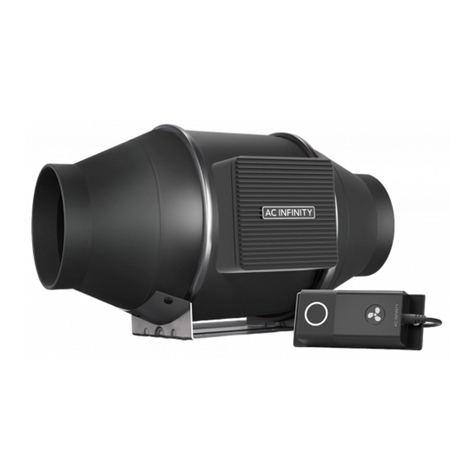
AC Infinity
AC Infinity CLOUDLINE S4 user manual
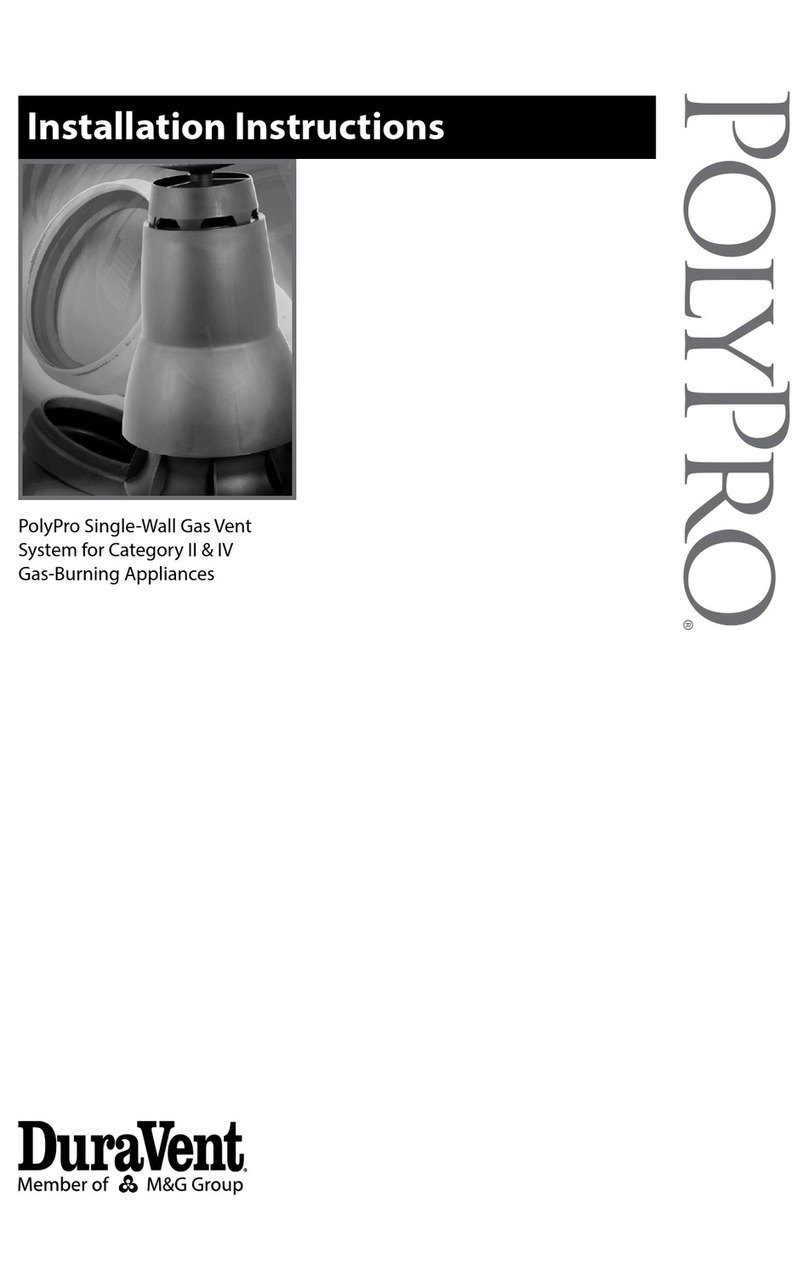
M&G
M&G DuraVent PolyPro 4PPS-ADL installation instructions

Westinghouse
Westinghouse Contempra Trio owner's manual
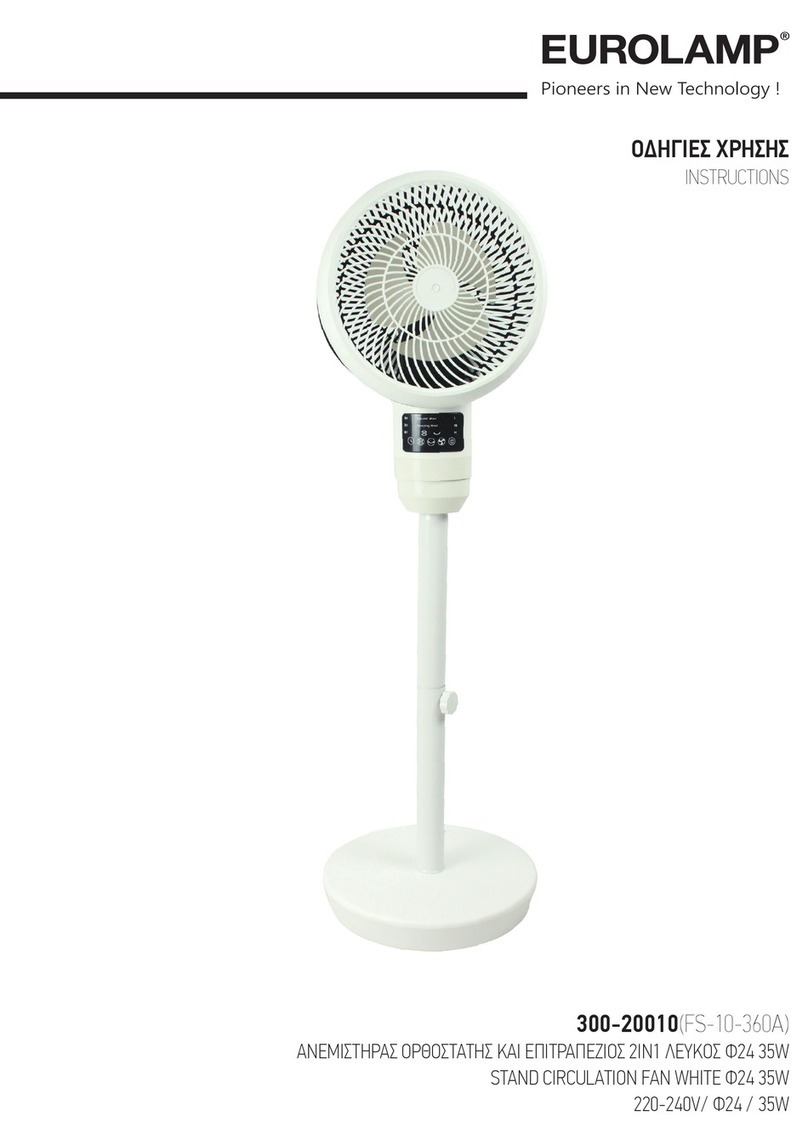
EUROLAMP
EUROLAMP FS-10-360A instructions

Home Decorators Collection
Home Decorators Collection TOLEDO 52-PLM Use and care guide
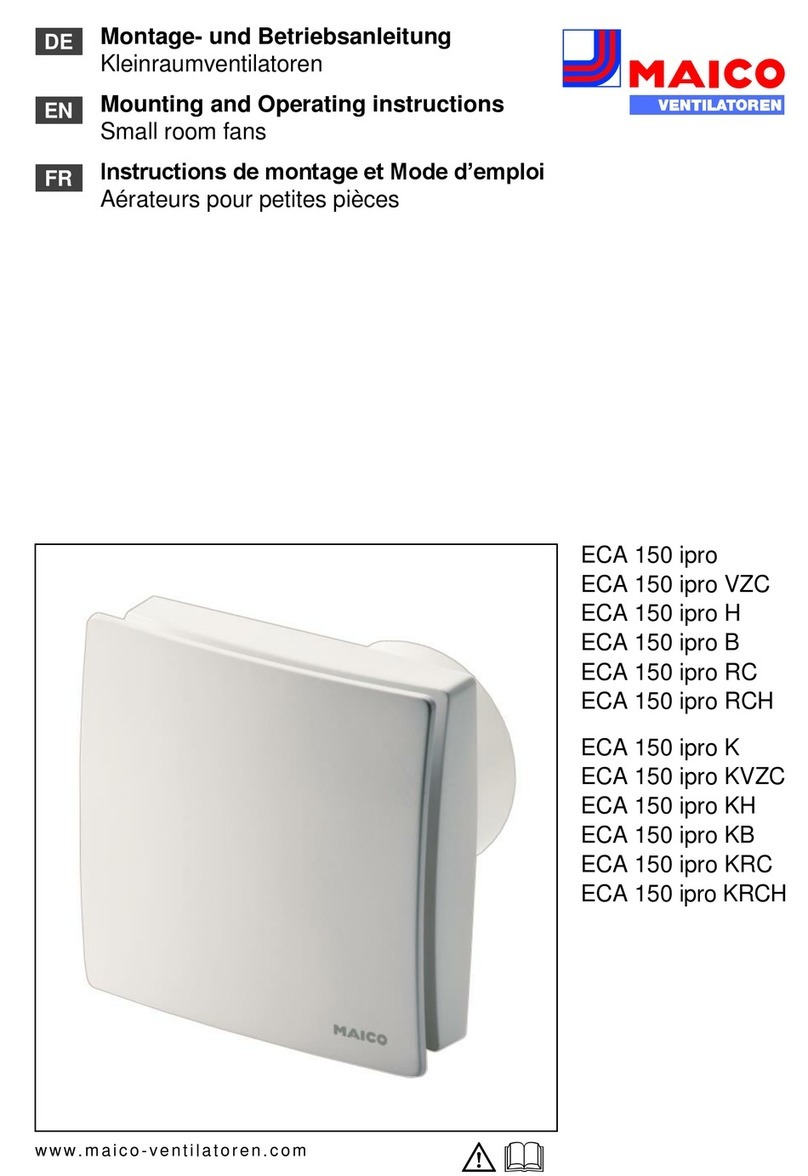
Maico
Maico ECA 150 ipro VZC Mounting and operating instructions
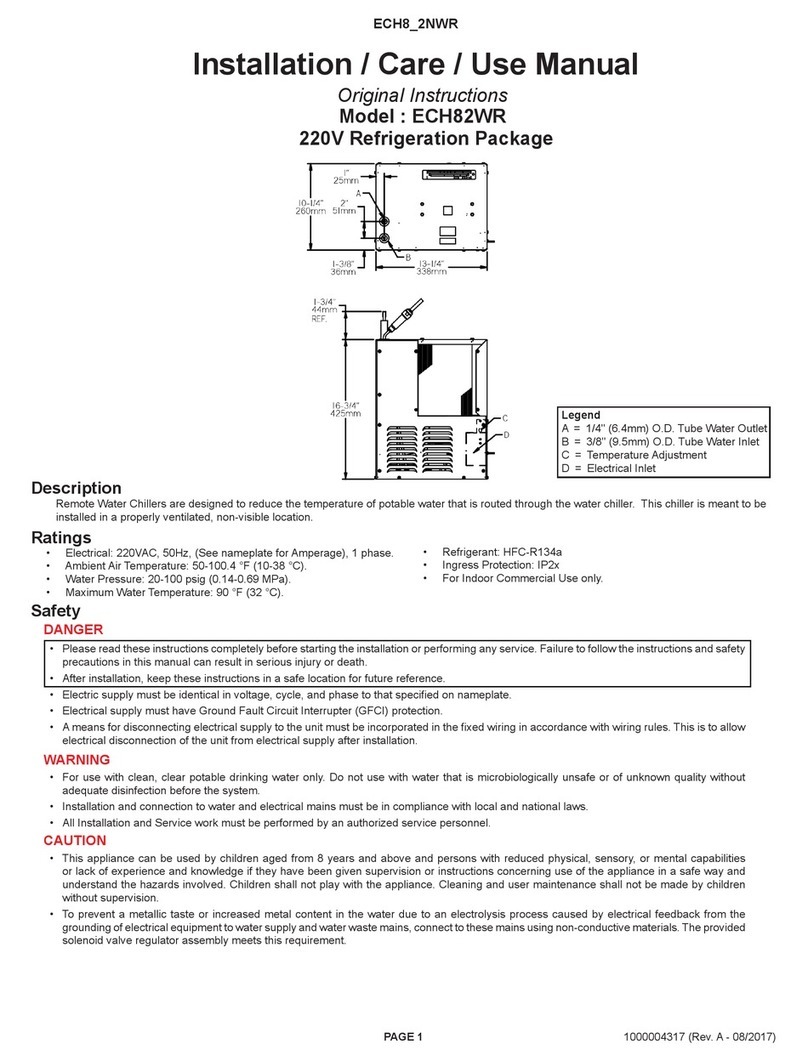
Elkay
Elkay ECH82WR Installation, care & use manual

Dundas Jafine
Dundas Jafine Soffit Exhaust Vent Use and care guide
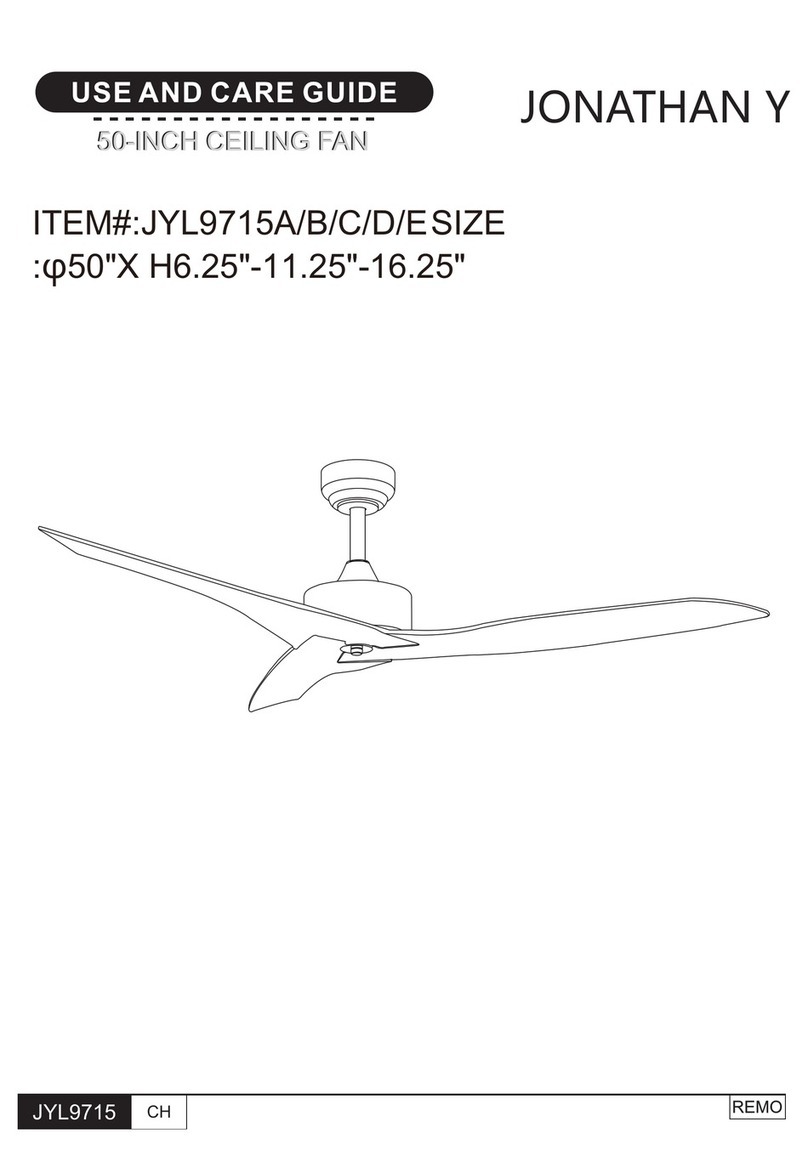
JONATHAN Y
JONATHAN Y Aldrin JYL9715A Use and care guide
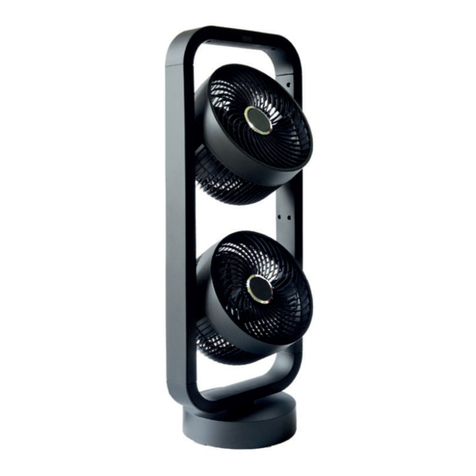
Sonnenkonig
Sonnenkonig VIND 2 instruction manual

S&P
S&P ARTIC-255N GR manual
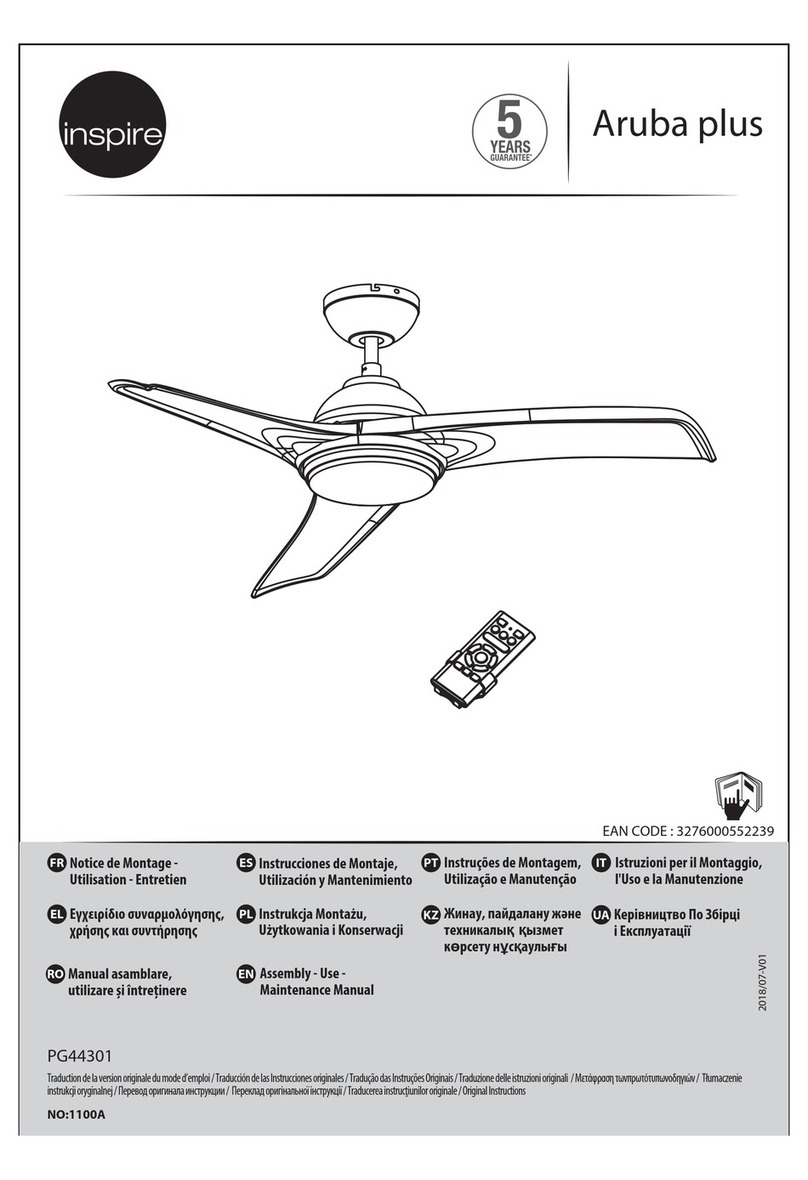
Inspire
Inspire Aruba plus Assembly, Use, Maintenance Manual
